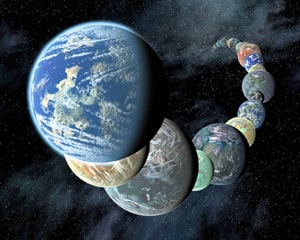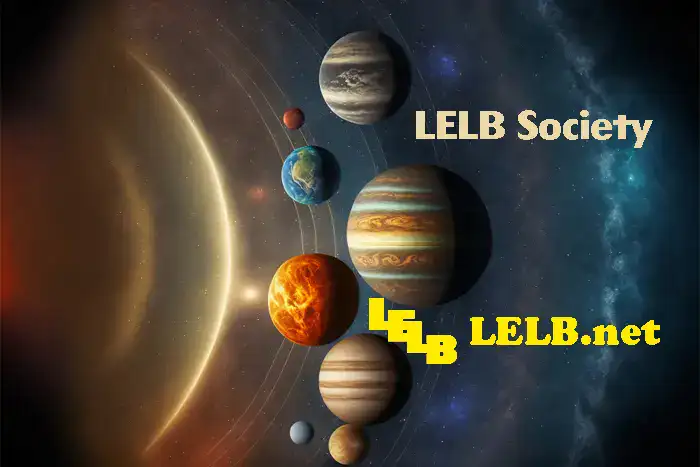English Documentary on Exoplanets with Transcript & Flashcards to practice reading and listening and improve your academic & scientific vocabulary
Source of documentary: National Geographic YouTube Channel
Source of image: https://exoplanets.nasa.gov/
Worlds over the borders
They are nestled in the final frontier. Countless worlds, scattered throughout countless galaxies, challenged the notion that we are alone in the universe. Exoplanets are worlds that exist outside of our solar system. Also known as extrasolar planets, these bodies often orbit their own stars, with some being a part of entire planetary systems.
Different categories of exoplanets
Exoplanets are made of the same elements as the worlds in our solar system, and based on their composition and structures are just as diverse. Some, known as giant or Neptune-like planets, are large gaseous worlds. Other gas giants called Hot Jupiters closely orbit their stars causing the planet to have high surface temperatures.
Another category of exoplanets consists of Super Earths. Smaller than the gas giants but larger than Earth, Super Earths are terrestrial and made primarily of rocky or icy material. The final category includes Earth Analogs. Much as their name implies, Earth Analogs are similar to Earth in various ways, including size, composition and distance to their home star.
Methods to circumvent exoplanets
Exoplanets are difficult to detect directly mostly because they’re outshined by the stars they orbit. To circumvent this, about five primary methods have been developed to find these planetary bodies, including radio velocity in which a planet causes a star to wobble. Direct imaging, where the glare of stars is blocked in order to see objects nearby. Astrometry, which observes a star’s movements in relation to nearby stars. Gravitational microlensing, which observes the light of a star being dent by a planet’s gravitational pull. And the most prolific form of finding exoplanets, transit. The method in which a planet passes between its star and Earth, thereby deeming its star’s light.
Tracking exoplanets
Scientists have suspected the existence of worlds outside of our solar system for thousands of years. But the first confirmed existence of an exoplanet orbiting a sun-like star only occurred in 1995. Ever since, about 4,000 exoplanets have been confirmed by multiple discovery methods, with about 3,000 more awaiting verification.
According to one theory, at least one exoplanet orbits each star in the Milky Way. This would place the exoplanet count in our local galaxy to about one trillion. The search for exoplanets continues, not just to create a catalog of known worlds, but also to see if life may exist elsewhere in the universe. Astrobiologists closely study the size, composition, and location of exoplanets relative to their stars to see the likelihood of organisms thriving in an environment other than Earth. Who knows what discoveries these new worlds could bring?




Hello Dr.Hariri, I have a question:
What does (these new worlds) in this sentence refers to? : Who knows what discoveries these new worlds could bring.
Hi Armaghan.
These new worlds refers to exoplanets as they are new to us, and when known by us, they could cast more light on the interstellar or galactical worlds or other inhabitable planets.
Thank you. I get it now.
You’re so welcome. Anytime.
Worlds over the borders
They’re nestled in the final frontier, countless worlds, scattered throughout countless galaxies, challenged the notion that we are alone in the universe. Exoplanets are worlds that exist outside of our solar system. Also known as extrasolar planets, these bodies often orbit their own stars, with some being a part of entire planetary systems.
Different categories of exoplanets
Exoplanets are made of the same elements as the world’s and our solar system, and based on their composition and structures are just as diverse. Some, known as giant or Neptune-like planets, are large gaseous worlds. Other gas giants called Hot Jupiters closely orbit their stars causing the planet to have high surface temperatures. Another category of exoplanets consists of Super Earths. Smaller than the gas giants but larger than Earth. Super Earths are terrestrial and made primarily of rocky or icy material. The final category includes Earth Analogs. Much as their name implies, Earth Analogs are similar to Earth in various way, including size, composition and distance to their home star.
Methods to circumvent exoplanets
Exoplanets are difficult to detect directly mostly because they’re outshined by the stars they orbit. To circumvent this, about 5 primary methods have been developed to find these planetary bodies, including radio velocity in which a planet causes a star to wobble. Direct imaging, where the glare of stars is blocked in order to see objects nearby. Astrometry, which observes a star’s movements in relation to nearby stars. Gravitational microlensing, which observes the light of a star being bent by a planet’s gravitational pull. And the most prolific form of finding exoplanets, transit. The method in which a planet passes between its star and Earth, thereby deeming its star’s light.
Tracking exoplanets
Scientists have suspected the existence of worlds outside of our solar system for thousands of years. But the first confirmed existence of an exoplanet orbiting a sun-like star only occurred in 1995. Ever since, about 4,000 exoplanets have been confirmed by multiple discovery methods, with about 3,000 more awaiting verification. According to one theory, at least one exoplanet orbits each star in the Milky Way. This would place the exoplanet count in our local galaxy to about one trillion. The search for exoplanets continues, not just to create a catalog of known worlds, but also to see if life may exist elsewhere in the universe. Astrobiologists closely study the size, composition, and location of exoplanets relative to their stars to see the likelihood of organisms thriving in an environment other than Earth. Who knows what discoveries these new worlds could bring?
Thank you so much for your transcription.